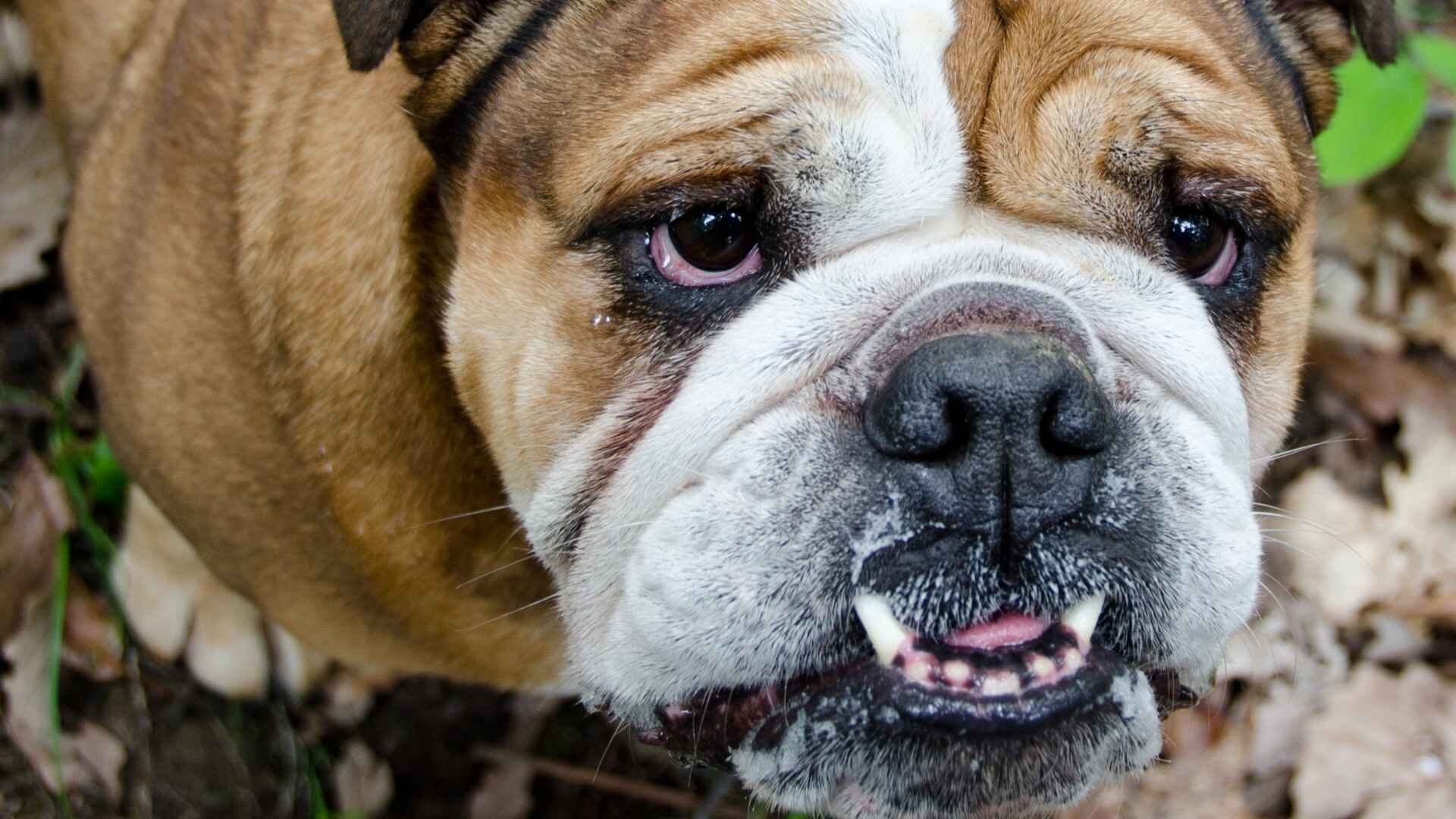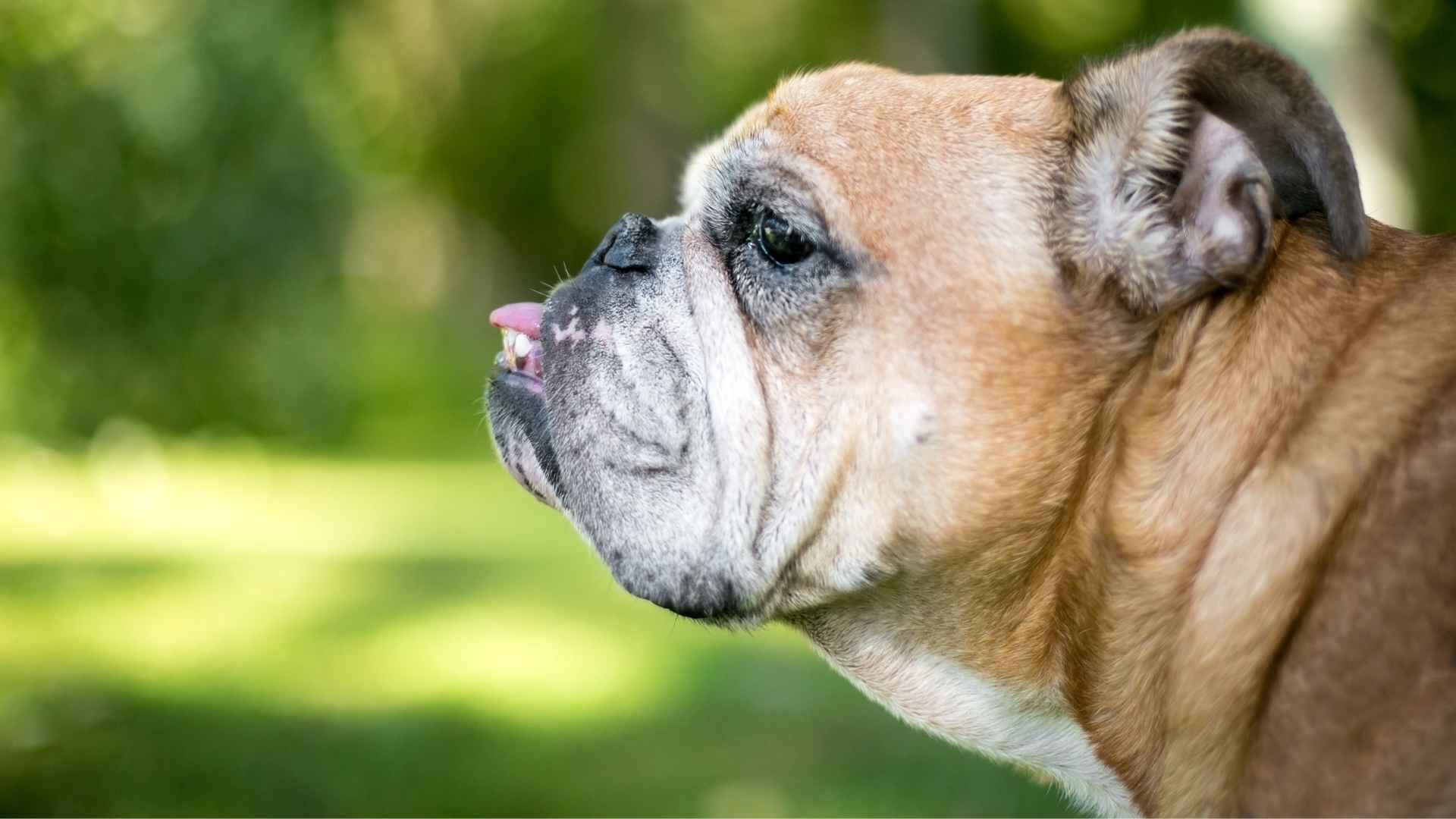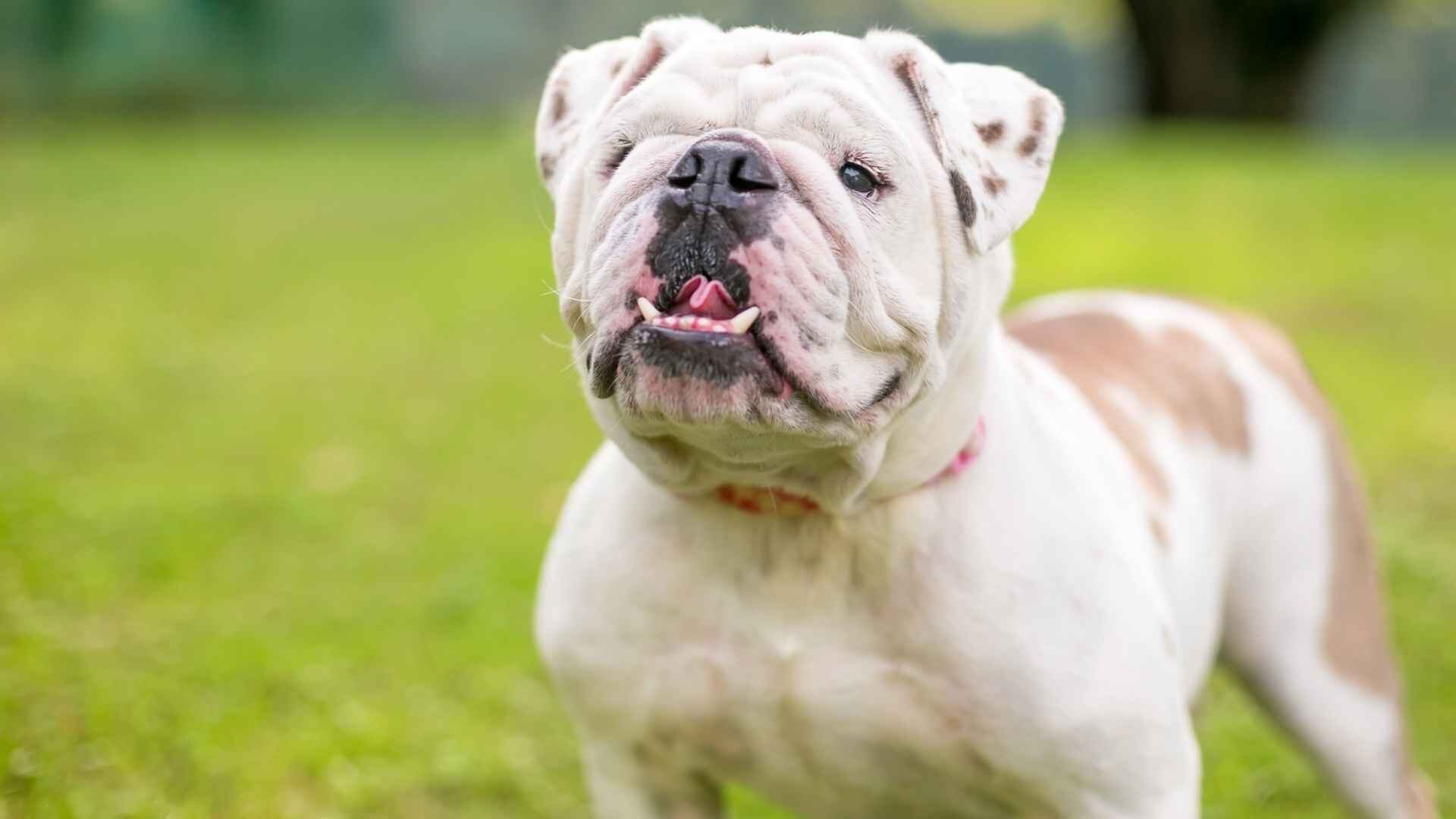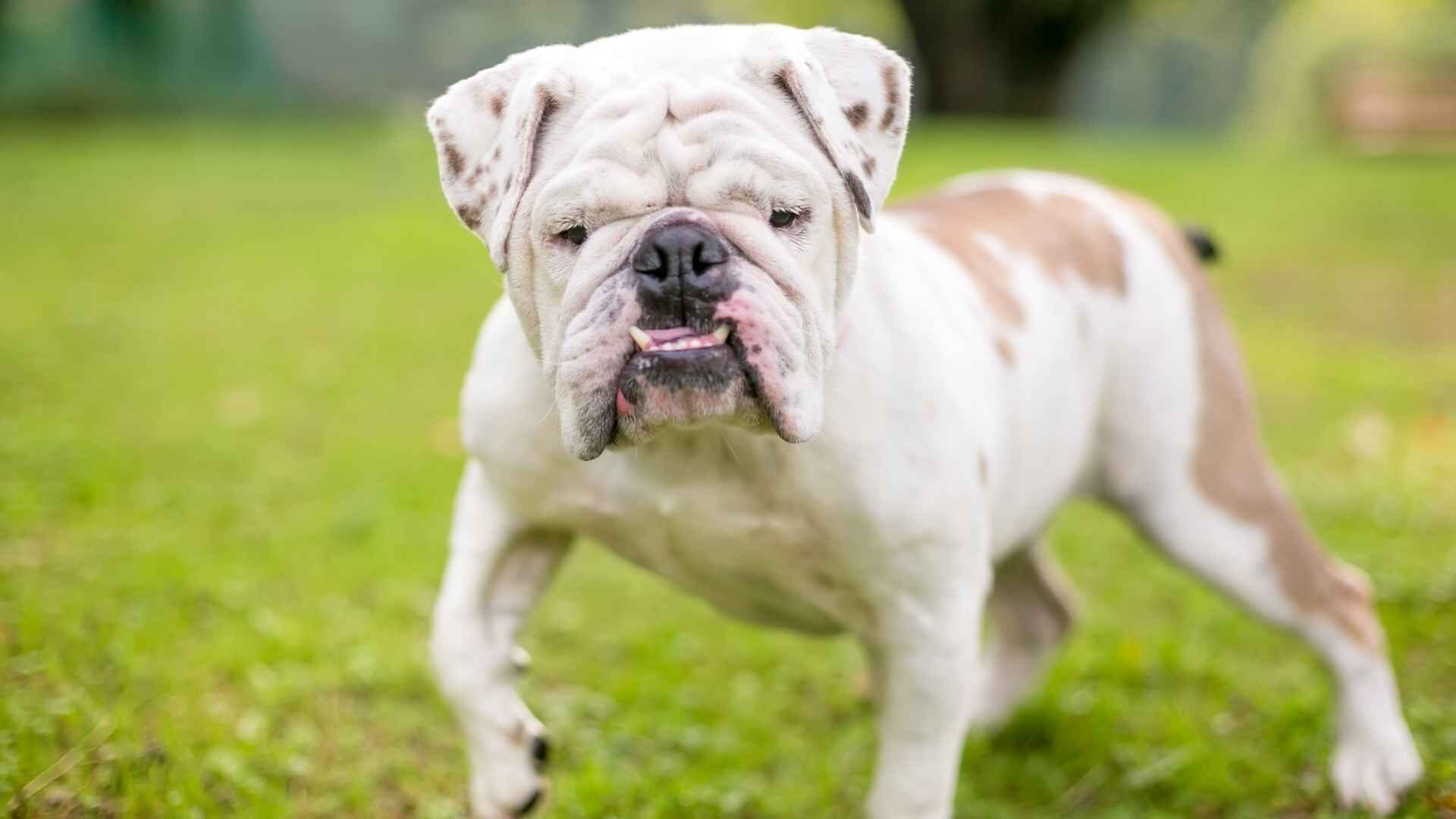Aside from the typical “big five” dog breeds, bulldogs tend to be among the most well-known and sought-after pets. It’s an old breed that’s been tinkered with for a long time, but mainly in the nineteenth century. Extreme tinkering and selective breeding, some say, are bad for the animal. They claim that too much breeding can lead to health issues that would be prevented if there were less of it.
The increased rate of breeding can be attributed to the public’s rising fascination with this type of dog. Old English hunting dogs called mastiffs are the ancestors of the modern English Bulldog. The first of his race appeared in medieval England, and since then, he’s spread all over the world. Bulls were utilized in a popular medieval English sport called bull-baiting.
The dog would startle the bull by biting its snout and violently shaking it. Back in those days, people felt that when the bull got terrified, its blood would get thinner, and the flesh would be tastier. This custom was mandated by law to be carried out before the slaughter of the bull. When this law was overturned in 1835, Bulldogs were left with no purpose.
These animals were too dangerous and strong to keep as pets. Those interested in breeding English Bulldogs banded together and founded a breeding club. The Bulldogs’ club’s goal was to breed them in a more desirable manner. They’d be better suited as pets if they were bred to be less hyper and more social.
What is an underbite?

Bulldogs today may appear to be larger and more powerful than they were in the 1800s, but they are actually weaker and slower. New Bulldogs also started experiencing an increase in the prevalence of a few health issues. It has a flat face, which can affect its ability to breathe, and its bones are often in poor shape.
There is a problem with the hip bones in as many as 75% of English Bulldogs. Providing adequate care for your Bulldog from the beginning will go a long way toward ensuring the dog’s long and happy life. An excellent decision we made early on was to equip our Bulldog with all the necessities. We wanted to give our puppy the best possible start in life, and the package we bought helped us do so.
English Bulldogs are prone to jaw issues due to overbreeding. Underbite and Overbite are two distinct dental issues. OK, but what exactly are those? The skulls of bulldogs are shaped in a way known as brachycephalic.
The answer is yes; that is a pretty challenging term. However, this results in an inward-turned face. Because of this, an individual’s upper jaw will be significantly shorter than their lower jaw. The resulting ailment is known as an underbite. Overbite is the condition that occurs when the upper jaw is larger than the lower.
Doi bulldogs have an underbite?
The skulls of bulldogs are brachycephalic, which causes their faces to be pushed inward. Because of this, underbite typically develops in which the upper jaw is shorter than the lower jaw. While some bulldogs have mild underbites, some suffer from severe cases that make eating painful or impossible.
The severity of the illness varies greatly depending on the bulldog breed in question and its specific breeding criteria. Bulldogs are characterized by their short muzzles and flat faces, as well as their malformed noses and abnormally small tracheae. The dog’s lower jaw is the only protruding facial feature, giving the impression that the lower jaw rolls up over the top jaw.
Since the lower jaw contains 22 teeth and the upper jaw contains just 20, additional space must be made in the lower jaw. The undershot jaw and flat face of the Bulldog are features that are prized by both breeders and their human companions. These canines are bred to have that jaw structure because it is thought to be aesthetically pleasing.
What causes English bulldog underbite?

In the United States, Bulldogs rank among the top five most popular dog breeds. It’s easy to understand why this breed is so popular; they have a demeanor that strikes a balance between calmness, bravery, and friendliness.
Bulldogs, it seems, are having a moment in both the English and French language communities. There must be something about bulldogs that attracts the likes of Lady Gaga, Leonardo DiCaprio, and John Legend (whose dog even has a Twitter account) to have them as companions. Here are ten details about this dependable and lovable breed that you might not know.
1. Why don’t you take care of those lines and wrinkles
Dogs were bred specifically for their wrinkles during the time of bull baiting. The dog’s eyes were protected from the flying blood during bull baiting by the folds of skin. Brutal. Those cute wrinkles require regular wiping to prevent infections, which is an interesting truth.
2. These roots run deep
In 1886, bulldogs were recognized by the American Kennel Club. Exactly 130 years ago!
3. Regarding the origin of their name
As their name suggests, bulldogs were initially developed for the purpose of baiting bulls. For this reason, it makes sense that they were short and stocky (to have a low center of gravity) and had an underbite, which facilitated a firmer grip on their prey. Thankfully, bull baiting as a sport has faded into history.
4. Which part of the world do bulldogs originate from
Female bulldogs, naturally. C-section births are rather typical for the breed. The Telegraph provides further explanation there. The puppies’ heads are usually too enormous for the birthing canal, necessitating a c-section.
5. Celebrities at Iconic Locations
Numerous illustrious organizations use the breed as their mascot, including the illustrious Yale University and the United States Marine Corps. No one can argue with the resoluteness of those bent knees.
Can you fix an English bulldog underbite?
Possibility of excessive flatulence and salivation Snorts, snuffles, and wheezes frequently; she may also snore. Dogs of this breed are prone to putting on extra pounds if they don’t get enough exercise. Easily hurt, develops slowly, Instinctively dominant, and prone to possessiveness about food and playthings.
Information on the English Bulldog Dog Breed She builds strong ties with people and is a smart, trustworthy companion. She is a friendly and upbeat addition to any household because of her early socialization and the firm direction her parents have given her. After bull baiting was outlawed in England in 1835, a new breed of dog emerged with a big head and thick, stocky body: the contemporary Bulldog. The Pug was bred with the Old English Bulldog to make a more submissive and loving companion animal.
While the Bulldog has kept its protective and courageous traits, its ferocity and aggression have been bred out of the breed. The United States Marine Corps and over thirty American universities have adopted the Bulldog as their mascot to symbolize resilience and perseverance in the face of hardship.
They are well-known for their amiability, childlike enthusiasm, and clownish antics, all of which have earned bulldogs a place in popular culture. The average lifespan of a healthy Bulldog is 10–12 years.
Dog breeds that are common to have underbites
The coefficient of inbreeding (COI) is a calculation created by Sewall Wright in 1922 that is used by specialists to determine the level of inbreeding in a certain puppy. Norwegian Lundehunds, pugs, English bulldogs, basset hounds, golden retrievers, Labrador retrievers, and boxers are the most inbred dog breeds on record.
Even though veterinarians have a good idea that these breeds are more likely to be inbred, the only way to know for sure is through genetic testing, such as this genetic COI kit. However, inbreeding can leave visible signs, as we discussed earlier.
Small stature for his breed, the presence of congenital birth abnormalities, or the manifestation of intellectual disability are all strong indicators that inbreeding is at play in the case of a dog from a breed known to be inbred.
I was wondering if anyone knew the drawbacks of inbred dogs. Inbred dogs are more prone to exhibit behavioral disorders than outbred dogs, and it’s not just because of the physical problems brought on by inbreeding. To help you determine if your dog is inbred, we’ve listed the top five symptoms below.
1. DNA damage increases the risk of developing health problems.
Broken genetics are the end result of inbreeding. Dogs with more generic variation make it easy to breed out detrimental mutations of all three types (additive, dominant, and recessive), especially when it comes to a damaged sequence responsible for recessive features. In inbred dogs, both parents contribute to the transmission of a flawed genetic pattern.
2. Fertility issues are common in inbred dogs
Dog breeds with inbreeding rates of more than 5% are more likely to have low fertility and small litter sizes, according to the Institute of Canine Biology. Sadly, inbreeding is a problem in almost all dog breeds. Only about twenty breeds are thought to have inbreeding levels of 25% or below, which is shockingly low.
3. Inbreeding depression is a peculiar phenomenon
Higher rates of puppy mortality and decreased lifespans due to a compromised immune system are only two examples of how inbreeding depression, also known as “an unspecific decline of fitness,” negatively impacts an inbred dog’s quality of life. Disorders of the nervous system, the skin, the digestive system, and the joints (such as hip dysplasia) are frequently encountered medical disorders.
4. Aggression is sometimes passed on through inbred lines
Dogs that have been inbred often have lower IQs than other canines of the same breed, and there is some evidence that this is also associated with an increased risk of developing behavioral problems. Inbred dogs are more likely to engage in aggressive behaviors like rough play, snapping at or biting humans or other animals, and even violent attacks.
5. The incidence of anxiety disorders in inbred dogs is higher
Inbred puppies are more likely to exhibit aggressive behavior and personality issues. Inbred dogs are more likely to develop problems like severe separation anxiety, impulsive actions (such as compulsively chasing automobiles or bolting out into the street), fearfulness, and even a complete lack of compassion for their human family.
An image of a German shepherd sprawled out on his side in a backyard. While inbreeding is a problem in many dog breeds, it is more severe in some than others. We advise doing your homework on breeders and seeking a genetic COI before buying a puppy to make sure your new addition is as happy and healthy as it may be. What’s that, you say? See if there is a refuge for animals in your area. In fact, there are quite a few dog breeders in the area, and you might be amazed at how many purebred dogs are available.
When does an underbite needs to be corrected?

Oral surgeons conduct orthognathic surgery, often known as jaw surgery, to realign jaws that are positioned improperly. Adjusting a patient’s jaw has proven to have positive effects on their ability to breathe, speak, and chew. Could you be considering jaw surgery? Five methods are listed below.
When the lower front teeth protrude further than, the higher front teeth, this is known as an underbite. Class III malocclusion is also known as prognathism. As a result, the affected areas of the face and lips take on a bulldog-like appearance. There are extreme forms of underbite in which the lower teeth protrude far forward. Some manifestations are far more subtle and barely discernible than others.
When you have an underbite, it affects more than just your smile. Some people may adapt to moderate cases, but those with more severe cases may experience oral health issues such as difficulty biting and chewing food, trouble speaking, and pain in the mouth and face from improper jaw alignment.
Underbite results in Several things that can influence how your teeth line up. The top set of teeth should naturally rest somewhat over the lower set. The largest and flattest teeth in your mouth, your molars, should be able to snuggly nestle into one another. When your teeth are properly aligned, you won’t accidentally bite your cheeks, lips, or tongue.
1. You have regular issues with your jaw or head pain
Temporomandibular Joint Disorder is characterized by frequent headaches and migraines, as well as jaw pain (TMJ). Correctional jaw surgery can alleviate the discomfort and agony of TMJ in the jaw joint and the muscles surrounding it, as well as relieve associated headaches.
2. Bittering, chewing, and swallowing are all difficult for you
At times, the upper and lower jaws develop at different rates, leading to a misalignment that makes eating difficult. Orthognathic surgery may be necessary if you have difficulty biting, eating, or swallowing.
3. You have issues sleeping, breathing, and snoring
A misplaced jaw can also cause sleep apnea. A common cause of sleep apnea is a misalignment of the jaw, which blocks the airways during sleep. It is possible to treat sleep apnea with jaw surgery performed by our oral surgeon.
4. You’re suffering from open bite
Do your upper and lower teeth touch when you close your mouth? If so, you may be affected by an open bite, which is associated with difficulties in pronouncing certain sounds. Corrective jaw surgery may be required if your open bite is severe.
5. You can have a lopsided jawline because of an injury to your face
Repairing broken jaws and adjusting the shape of the face with orthognathic surgery. Major facial or jaw trauma often necessitates surgical intervention. Get in touch with a jaw surgery clinic in Savage, Shakopee, or Eden Prairie, Minnesota, to set up a consultation.
How to fix an underbite in English Bulldog?

As a result of the breed’s known health issues, prospective owners of English Bulldogs need to perform extensive homework on the breed before committing to a puppy. You might wonder why English Bulldogs have an underbite if you’re looking at potential health issues the breed may face. Due to being a brachycephalic dog breed, the English Bulldog often has a short, flattened face, which can lead to an underbite.
Because of the compression of their facial features, they frequently exhibit an underbite. A majority of English Bulldogs will have an underbite, but this condition can range from minor to severe. If your English Bulldog has an underbite, they may have a variety of issues, the severity of which varies from case to case. With an underbite so slight that it’s scarcely perceptible, your English Bulldog probably won’t have any problems and can go about their normal existence.
There is no need to worry about correcting your English Bulldog’s underbite unless it is giving it pain or affecting its ability to chew. If your English Bulldog’s underbite is particularly severe and giving them discomfort, you should consult your veterinarian to find out whether or not they recommend correcting it.
There are several alternatives for treating an underbite in an English Bulldog if the veterinarian determines that one is necessary. Various therapeutic approaches include: The problematic tooth or teeth are removed. In an effort to tame your bulldogs, surgery may be in order. Invisalign is a type of orthodontic appliance. Because of the high cost and high risk involved, underbite therapy in English Bulldogs should be reserved for extreme cases.
As a result, your Bulldog may need to see an animal orthodontist or dental professional for therapy. If your English Bulldog suffers from an underbite, here’s what you can do about it. You should keep a close eye on your English Bulldog when it eats if it has an underbite to make sure it doesn’t have any problems.
Verify that your Bulldog’s teeth aren’t causing him any pain. It’s possible that your English Bulldog will get sick from an underbite if it’s too severe. Watch your dog closely, and if you see any signs of infection, make an appointment with a vet right once. If your English Bulldog suffers from a severe underbite, you should forego getting it any chew toys. Also, steer clear of soft dog food if you don’t want your Bulldog to start chewing itself in the mouth.
Watch My English bulldog has a life-threatening health issue | Video
Is an underbite common in bulldogs?
While underbite is common in French Bulldogs, some are more pronounced than others. “the bottom jaw is deep, square, broad, undershot, well turned up,” according to the Frenchie breed standard. When at rest, the lower jaws of short-faced breeds protrude somewhat.
Canines with underbites be problematic?
When a dog has an underbite, it increases their chance of developing dental disease and may cause them ongoing discomfort or difficulties chewing. Talk to your doctor if you’re concerned about the state of your dog’s teeth because of its underbite.
Does old age worsen underbites in dogs?
No, kids are not likely to outgrow the underbite as they get older. The underbite is permanent and does not worsen over time. The majority of dogs with underbites don’t have significant issues.
Is it possible to produce a dog with a mild underbite?
Your pet probably has a high genetic risk of passing on underbites to its offspring. Being responsible means making sure only the best genes and characteristics get passed down through the generations. If you want to breed your pet, you can advertise the puppies as “Pet quality” and sell them for far less than professional breeders.
In canine terms, what does a lower jaw that protrudes more than the upper jaw mean?
When the upper jaw is abnormally shorter than the lower jaw, this is called underbite dentition. This type of malocclusion is known as mandibular mesh occlusion or maxillary brachygnathism in veterinary dentistry, and it is classified as a Type 3 malocclusion.
Conclusion
Your devotion to Fido compels you to provide the best care possible. Because of this, we have included a brief overview of the topics we will cover with you regarding your Bulldog’s health. We can build a preventive health plan to look for and, hopefully, prevent some predictable hazards by learning about health issues that are unique to Bulldogs.
The breed of your pet can affect its susceptibility to a number of diseases and health problems. Canine geneticists and veterinarians agree that the disorders we’ve mentioned here have a notably high occurrence rate and/or considerable impact on this breed. Your dog is at a higher risk for these conditions, but that doesn’t imply she definitely will.
We will discuss the most typical problems seen by Bulldogs so you will have some concept of what she may face in the future. Of course, there are always exceptions to the rule, so please contact us if you experience anything out of the ordinary. This book details the most significant genetic predispositions for Bulldogs, as well as provides valuable information applicable to the health of all dogs.
Together, we can better prepare for your pet’s specific medical requirements with the help of the data you provide here. A rundown of at-home maintenance tasks that will maintain your English Bulldog in tip-top shape is provided at the article’s conclusion. Now that you know what to look for, you and I can rest easy knowing that your friend is in the best hands possible.
Bottom up
Please comment below about your ideas and share this “English Bulldog Underbite Problems and Guide to Fix Them” article with your friends.
Stay tuned with our website to find out more exciting stuff. Don’t forget to check out our previous articles too.
Until the, Read about, How to Highlight Hair at Home Without Foil: Guide to Know





